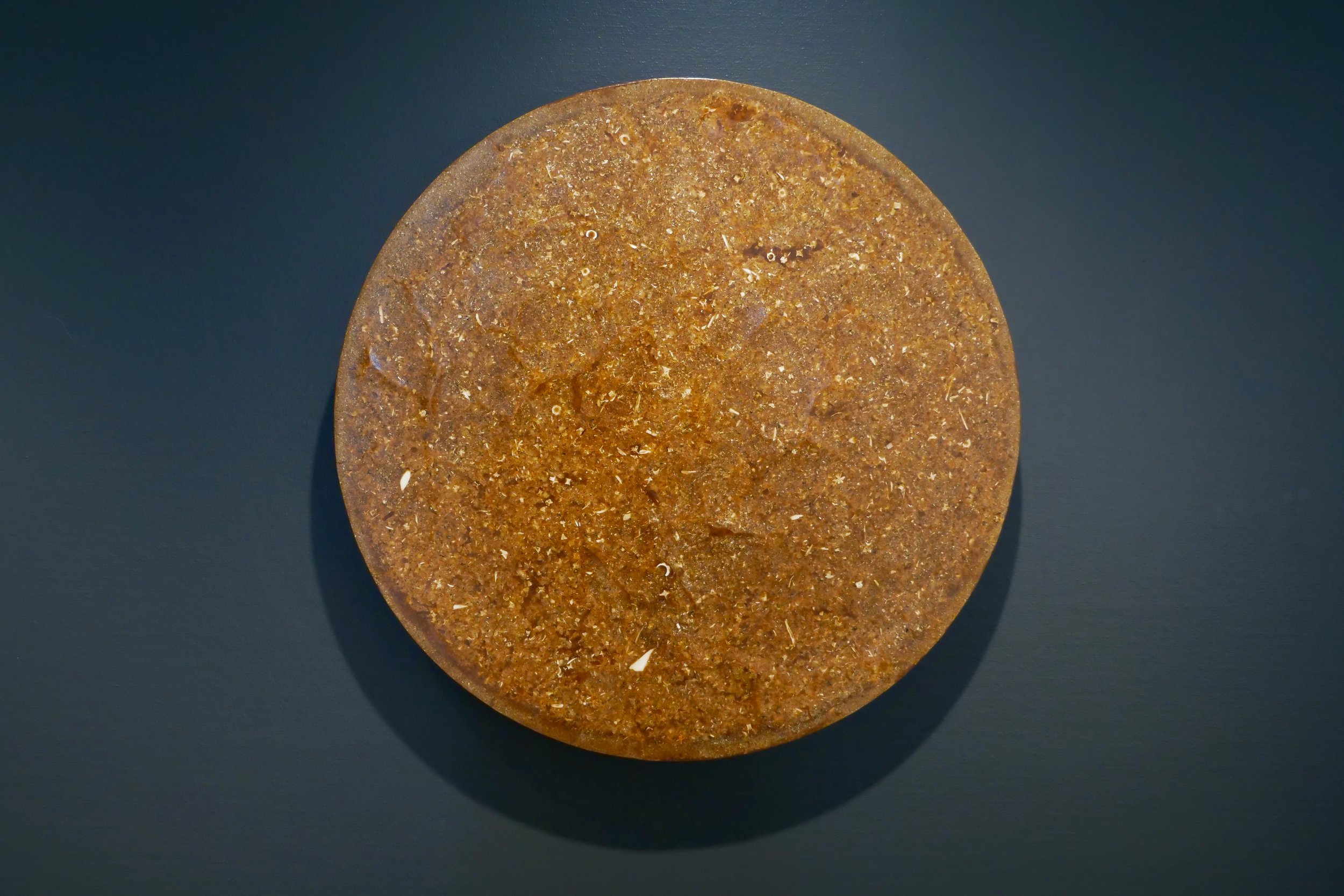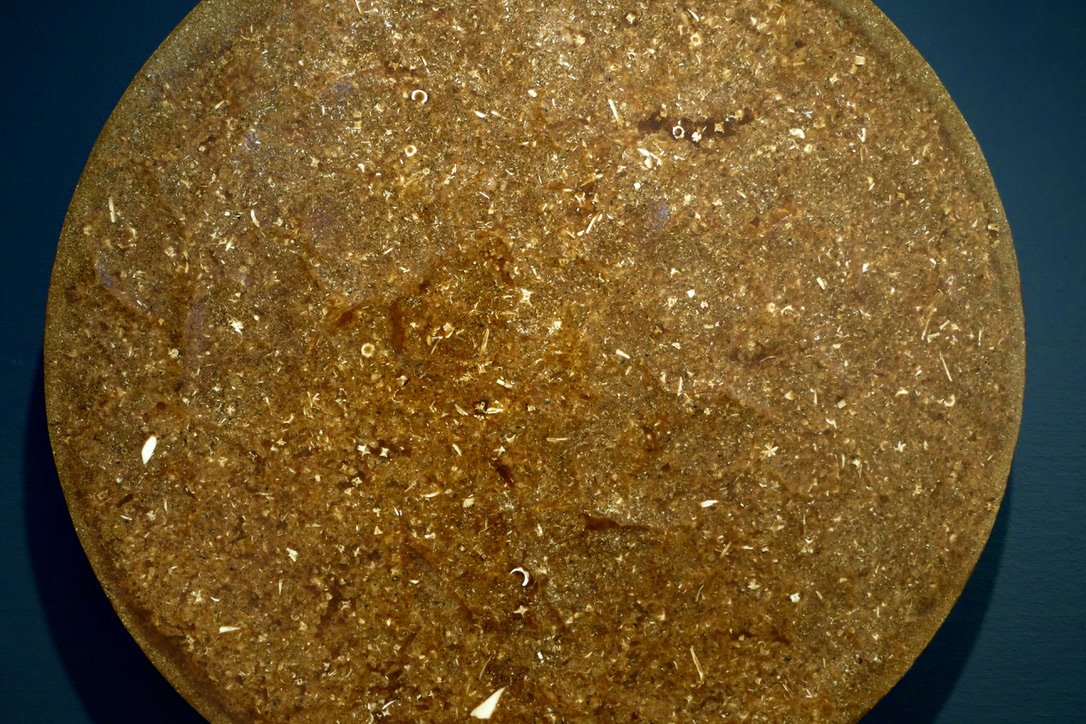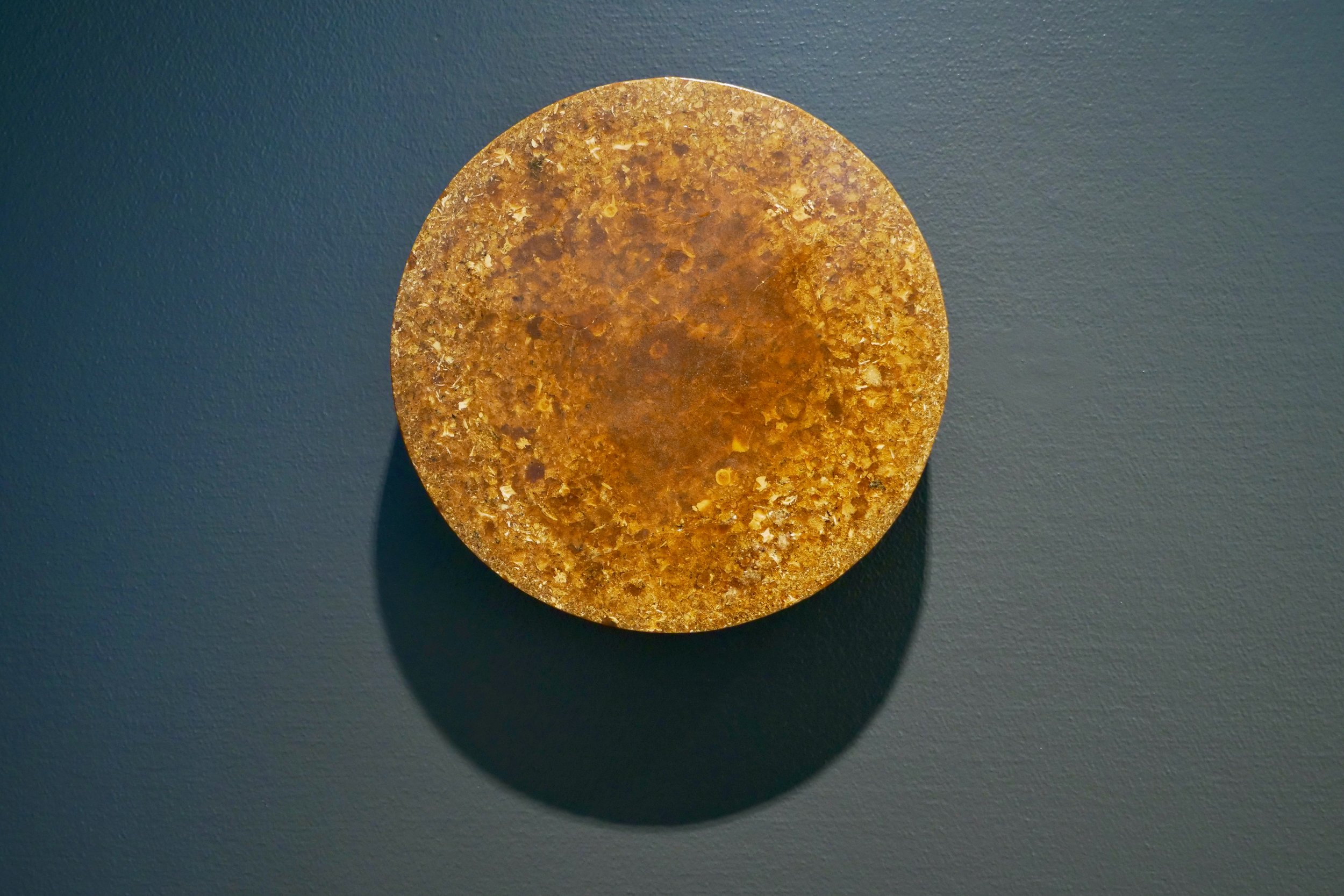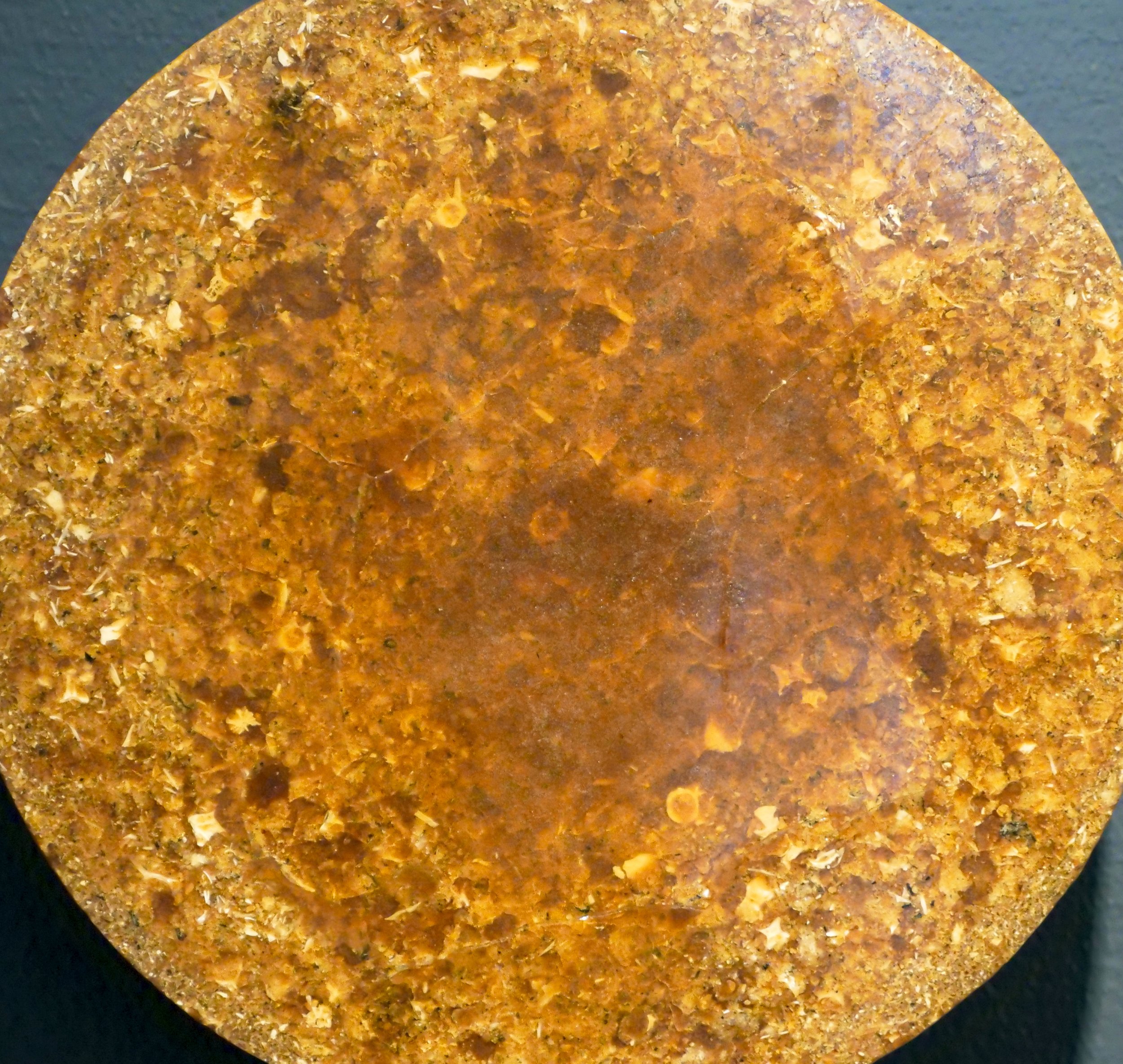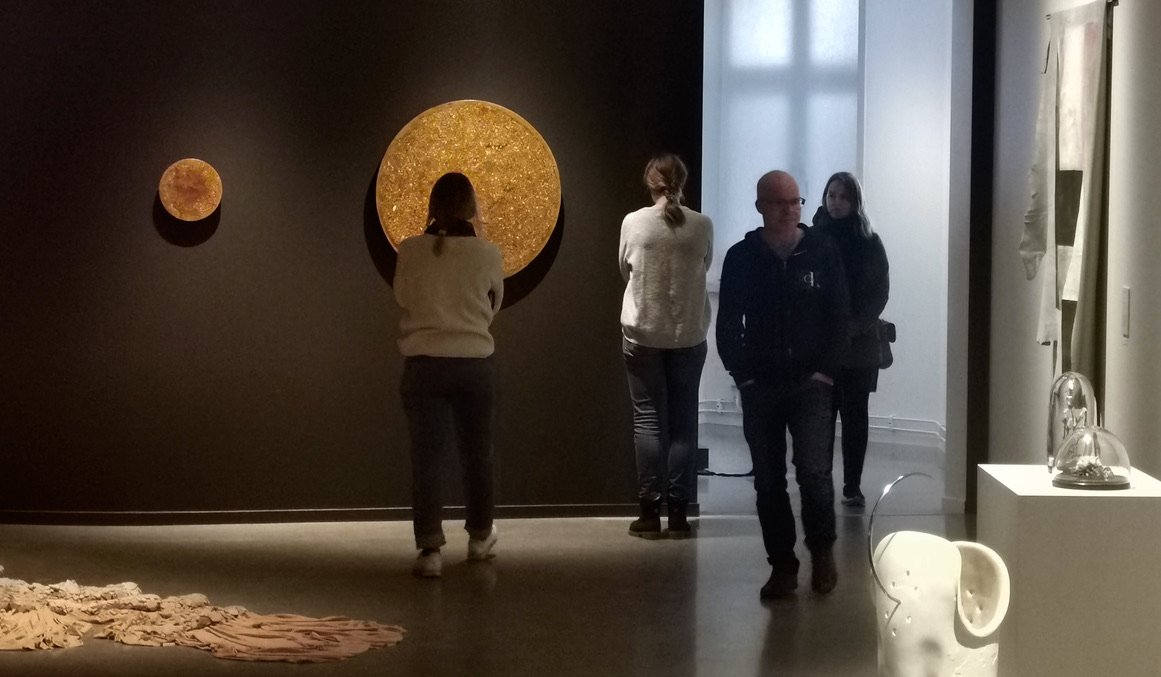R19 & R20
The works consist of slaughter remains from the ice-fishing seasons 2019 and 2020. Skin and bones from cod are boiled down to form glue, and the remains of the process are used as casting material in a timeline of visual fishing reports from the marine ice close to Tromsø
85cm & 28cm diameter both 7,5cm thick
Year 2021
Photo: Ingun A. Mæhlum /
Marita Isobel Solberg
"The aroma that comes from Trond Ansten's two round, brown, disc-shaped sculptures hanging on the wall is unmistakable. It takes me back to my childhood and long days spent on the pier working as a tongue-cutter. Images of large white vessels full of fish waste fill the retina. I remember how I loved sticking my hands down (with oil gloves, you know) to squeeze the contents out of the stomachs while I waited for the boats to come ashore with more cod heads for me.
My associations are quite much right. Trond Ansten's sculptures are made from cod remains from the ice fishing season 2019 and 2020, which the titles R19 and R20 also refer to. Ansten has molded the waste together with fish glue and processed it with sculptural finesse. The circles have acquired a smooth, delicate marble-like surface, and without the intangible material, the smell, I would never have guessed what the refined sculptures were made of.
The material Ansten has chosen is the result of preparation and human intervention. Gutting of fish - whether it happens in an industrial context or among hobby fishermen - is part of the cultural history from the coast. The union of nature and culture is thus as if casted in Ansten's two sculptures. The round disk shape - together with the title - also makes me think of statistical circle diagrams, and quantitative information about how much waste we produce. Thus, the castle sculptures are also a sly reference to current discussions about resource management.”
Hilde Sørstrøm / SE Kunst Magasin
“Even though the annual exhibition's competition format means renouncing a curatorial framework, there is a recurring theme with several of the artists, namely environmental and climate issues. This works best when the problem is linked to a specific place or a specific practice; it helps to anchor the works in something concrete and recognisable. Trond Ansten's two circles made of slaughter waste from cod are convincing in this respect. They are remnants from the 2019 and 2020 ice fishing seasons, and according to the catalog constitute "a timeline of visual catch reports from the ocean ice near Tromsø". The work contains references to (fishing) policy, ecology, food and coastal culture”
Eline Bjerkan / Kunstavisen


